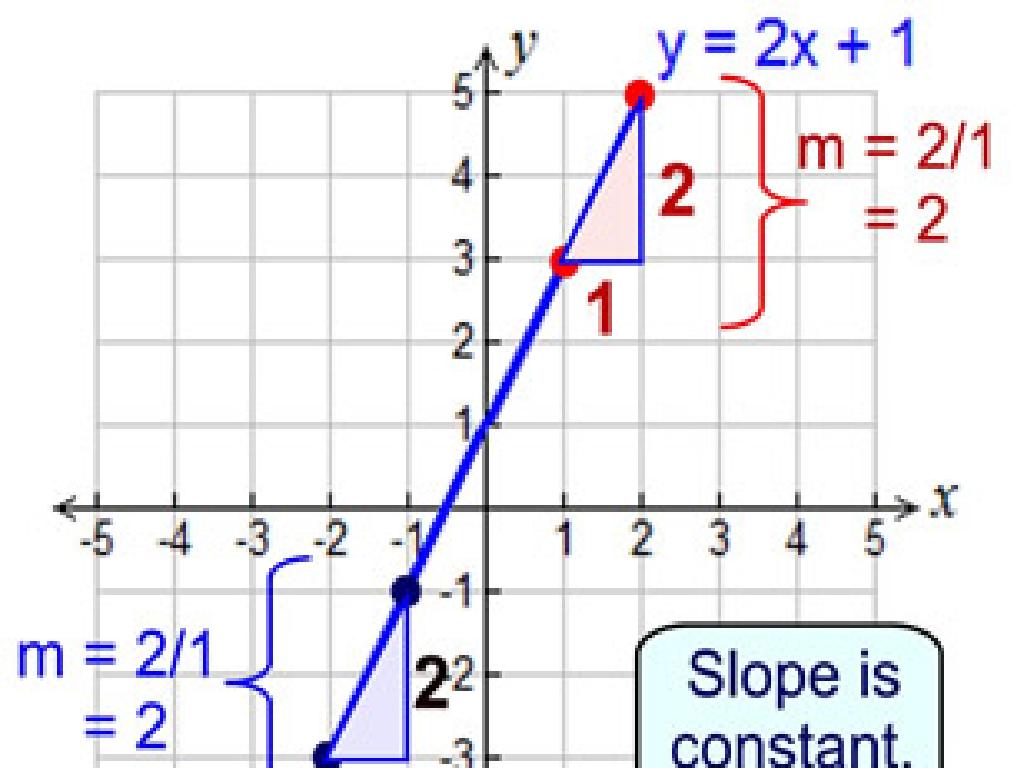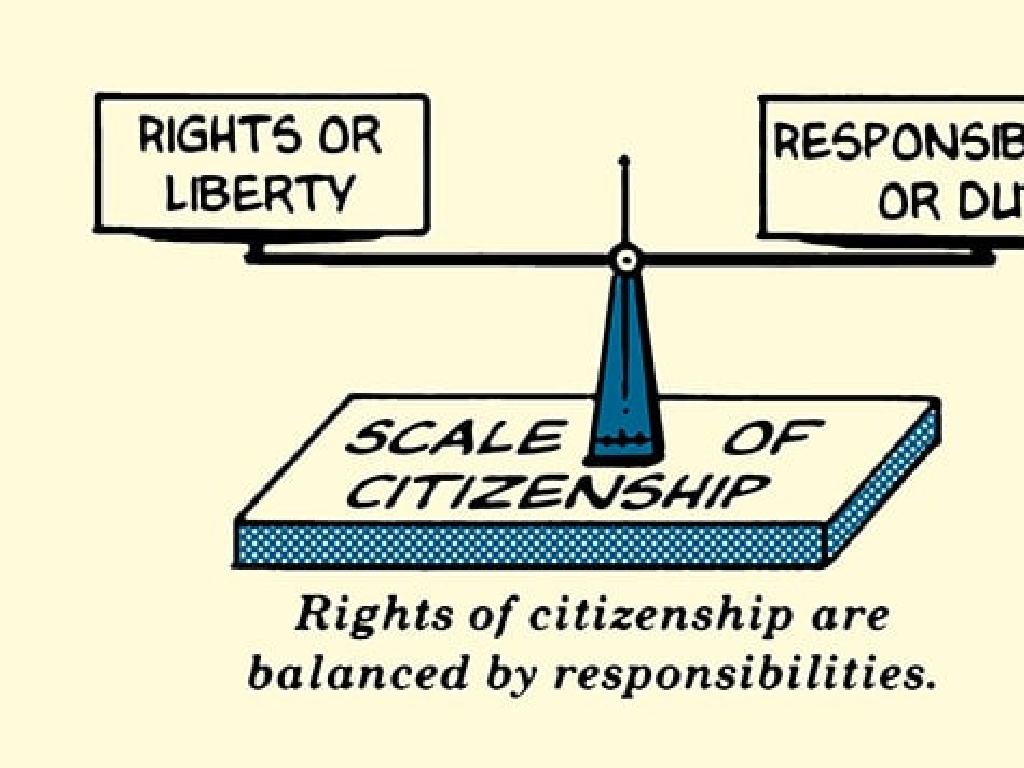The Scientific Revolution
Subject: Social studies
Grade: Eighth grade
Topic: Early Modern Europe
Please LOG IN to download the presentation. Access is available to registered users only.
View More Content
Welcome to the Scientific Revolution!
– Early Modern Europe overview
– A period of major historical changes from the 15th to 18th century
– Defining the Scientific Revolution
– A transformative era that redefined science from the late 16th to 18th century
– Significance in history
– Marked the emergence of modern science with new discoveries and methodologies
– Impact on modern science
– Paved the way for advancements that shape our understanding of the world today
|
This slide introduces students to the Scientific Revolution within the context of Early Modern Europe. It’s crucial to highlight that this period was marked by significant shifts in thought and culture, which laid the groundwork for modern science. Emphasize the importance of the Scientific Revolution as a pivotal moment when empirical evidence and the scientific method began to take precedence over traditional beliefs. Discuss how this era’s discoveries and scientific approaches have had a lasting impact, influencing technological advancements and our current worldview. Encourage students to think about how different our lives would be without the contributions of scientists from this period.
Before the Scientific Revolution
– Medieval worldview overview
– Earth-centered universe, limited technology
– Pre-revolution knowledge sharing
– Manuscripts in monasteries, few scholars
– Church’s influence on science
– Church as the main authority on knowledge
– Setting the stage for change
|
This slide aims to provide students with an understanding of the context in which the Scientific Revolution occurred. It’s important to discuss the medieval view of the world, which was largely influenced by religious perspectives and an Earth-centered universe model. Knowledge was preserved in handwritten manuscripts and was accessible to a limited number of scholars, often in monasteries. The Church played a pivotal role in dictating scientific knowledge, often blending theology with natural philosophy. Highlighting these points sets the stage for students to appreciate the significant shifts in thought and methodology that characterized the Scientific Revolution.
Key Figures of the Scientific Revolution
– Galileo Galilei’s impact
– Improved the telescope, studied celestial bodies, challenged traditional views
– Isaac Newton’s laws
– Formulated the laws of motion and universal gravitation, laying the groundwork for classical mechanics
– Contributions of other scientists
– Kepler’s laws of planetary motion, Vesalius’ advancements in human anatomy, Boyle’s law of gases
– The revolution’s legacy
|
This slide introduces students to the luminaries of the Scientific Revolution and their groundbreaking work. Galileo, often called the ‘Father of Modern Science,’ made significant improvements to the telescope and his observations supported the heliocentric model. Isaac Newton, one of the most influential scientists of all time, formulated the laws of motion and universal gravitation. Highlight other scientists like Kepler, Vesalius, and Boyle who contributed to various fields such as astronomy, anatomy, and chemistry. Emphasize the collective impact of these figures on the advancement of science and the shift away from Aristotelian and Ptolemaic views, leading to the Enlightenment. Encourage students to think about how these scientific discoveries still affect our understanding of the world today.
Inventions of the Scientific Revolution
– The Telescope: Galileo’s insights
– Galileo improved the telescope, studying celestial bodies.
– The Microscope: A new biological perspective
– Microscopes revealed cells and microorganisms.
– Impact on our cosmic understanding
– These inventions expanded knowledge beyond visible reality.
– Revolutionizing scientific thought
|
This slide highlights two pivotal inventions of the Scientific Revolution: the telescope and the microscope. Galileo’s enhancements to the telescope allowed humanity to observe the heavens in unprecedented detail, leading to the confirmation of the heliocentric model of the solar system. The invention of the microscope opened up the previously invisible world of cells and microorganisms, laying the groundwork for modern biology. Both inventions fundamentally altered our understanding of the universe, shifting the perception of humanity’s place within it and sparking a wave of scientific inquiry that challenged traditional beliefs. Encourage students to think about how these inventions changed the way we see our world and ourselves. Discuss the broader implications of these discoveries on religion, society, and philosophy during the era.
The Scientific Method: A Revolution in Knowledge
– Unveiling the Scientific Method
– A systematic approach to research and discovery.
– Advancements from Scientific Method
– Breakthroughs in physics, chemistry, biology, and astronomy.
– Embracing questioning and experimentation
– Curiosity and empirical evidence drive science forward.
– Scientific Method’s lasting impact
– Foundations for modern science and critical thinking.
|
This slide introduces the Scientific Method as a transformative process that reshaped how we understand the world during the Scientific Revolution. Emphasize the method’s structured approach to inquiry, which involves observation, hypothesis, experimentation, and conclusion. Highlight key advancements in various fields of science that were made possible by the Scientific Method. Discuss the importance of questioning established beliefs and relying on experimentation to gather evidence. The impact of the Scientific Method extends beyond science, fostering critical thinking and problem-solving skills that are essential in various aspects of life. Encourage students to think of how the Scientific Method is applied in today’s scientific endeavors and in their own experiences with problem-solving.
Impact of the Scientific Revolution on Society
– Influence on religion and philosophy
– Challenged traditional beliefs, prompting a reevaluation of doctrines
– Societal impact and future generations
– Innovations led to societal shifts and inspired Enlightenment thinkers
– Long-term effects on education
– Education evolved with a greater emphasis on empirical evidence and scientific methods
– Shaping the modern world
– Set the foundation for technological advancements and modern scientific inquiry
|
This slide examines the profound influence of the Scientific Revolution on various aspects of society. It began by questioning and ultimately transforming the religious and philosophical landscape of the time, leading to a new secular worldview. The ripple effects of this intellectual upheaval were felt across society, laying the groundwork for the Enlightenment and altering the course of future generations. Education systems were reformed to incorporate scientific reasoning and empirical research, which has persisted into modern education. The Scientific Revolution’s legacy is evident in today’s technology-driven world, where scientific inquiry continues to push the boundaries of knowledge and innovation.
Class Activity: Role-Play the Scientific Revolution
– Divide into small groups
– Each group role-plays a scientist
– Galileo, Newton, or Kepler as examples
– Research your scientist’s life
– Focus on their biography and era
– Prepare a scientist discovery presentation
– Highlight key discoveries and their impact
|
This activity is designed to engage students with the history of the Scientific Revolution through interactive role-play. By dividing the class into small groups, each group can focus on one significant figure, such as Galileo Galilei, Isaac Newton, or Johannes Kepler. Students should research their assigned scientist’s biography, the historical context of their work, and their major discoveries. Encourage them to understand the impact these discoveries had on science and society. Each group will then prepare a short presentation to share with the class, allowing students to teach and learn from each other. This activity fosters collaboration, research skills, and a deeper understanding of the scientific advancements that shaped our world. Provide a list of possible figures to choose from and ensure that resources are available for all students to conduct their research.
Reflecting on the Scientific Revolution
– Recap the Scientific Revolution
– Summarize key figures and discoveries
– Its impact on modern society
– Consider technology, medicine, and knowledge
– Share your learnings
– Each student discusses their takeaway
– How science shapes our world
– Explore science’s role in daily life
|
As we conclude our journey through the Scientific Revolution, it’s important to reflect on the key figures, like Galileo and Newton, and their groundbreaking discoveries that have shaped our understanding of the world. Discuss how these advancements laid the groundwork for modern science, affecting technology, medicine, and our overall quest for knowledge. Encourage students to share what they’ve learned and how they believe science influences our lives today. This reflection will help them appreciate the long-lasting effects of the Scientific Revolution and recognize the importance of scientific inquiry in contemporary society. Engage them in a discussion about how scientific thinking and skepticism can lead to progress and innovation.





